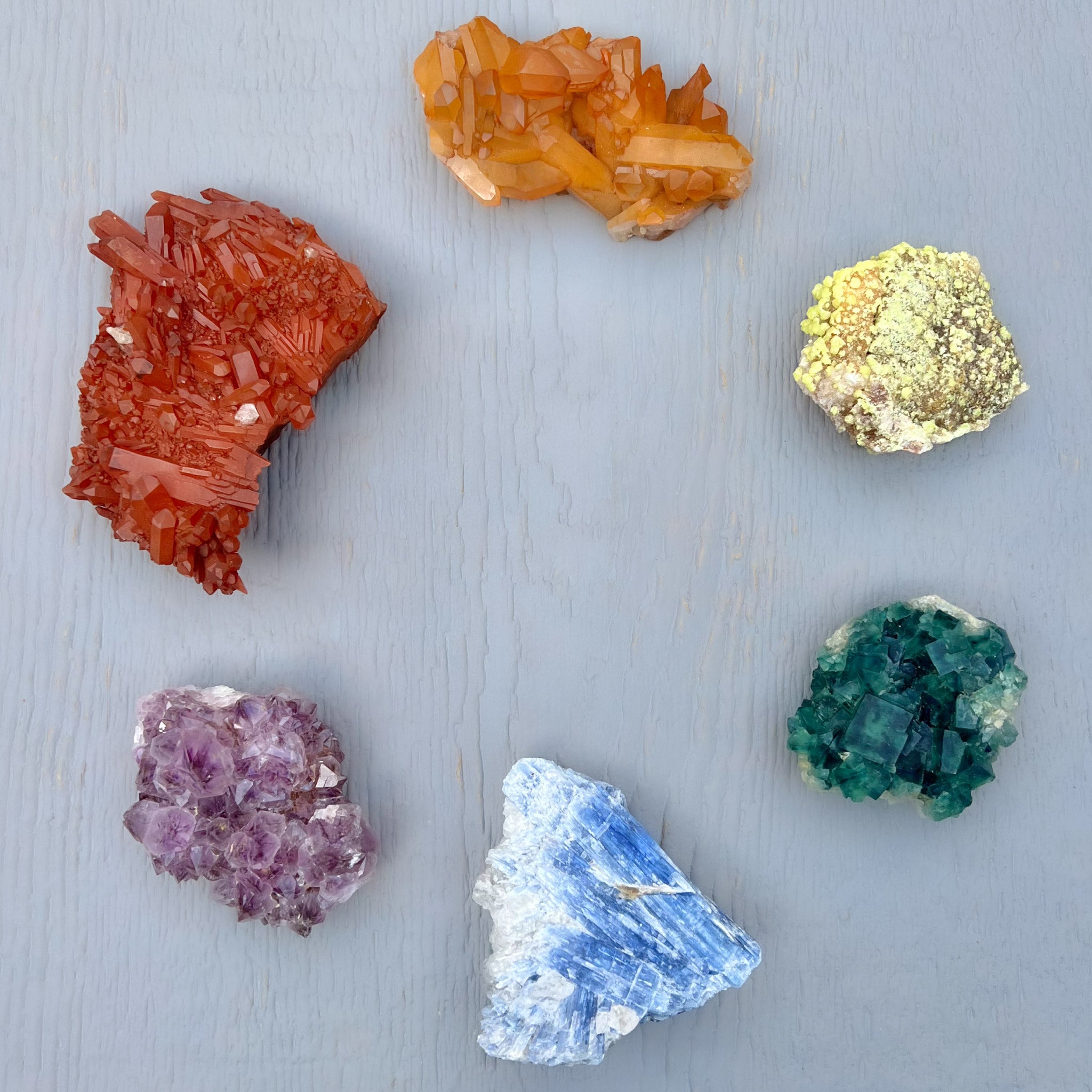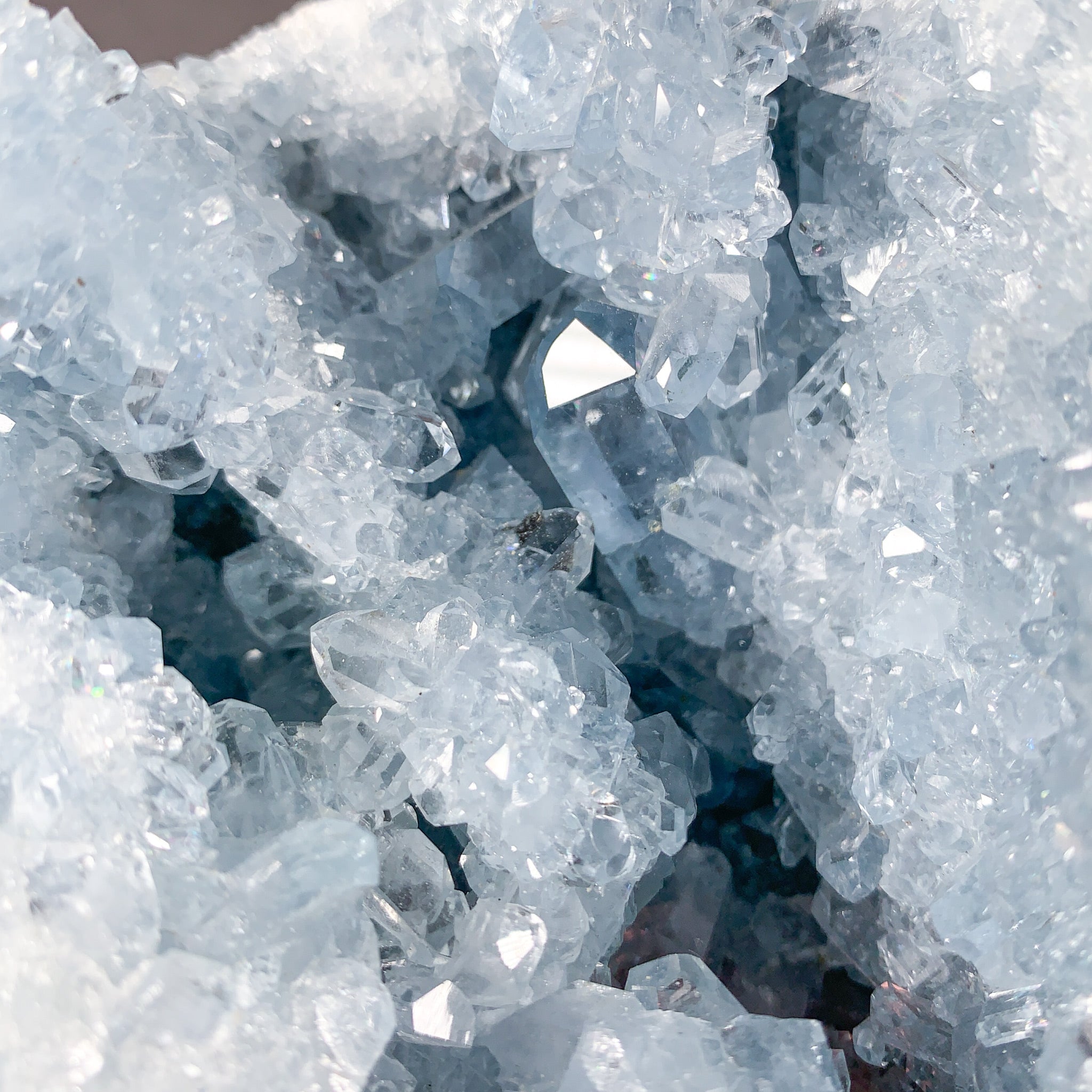Let's explore what pegmatites are, how they form, what kind of rocks are found in pegmatites, and what makes them so special!

Giant Pink Tourmaline with Quartz on display at the Museum of Natural History NYC
What is a Pegmatite?
A pegmatite is an igneous rock with extremely coarse grain size, and is typically found as dikes within a larger plutonic or metamorphic rock mass. Because they form during the final stages of magma crystallization, pegmatites have larger, more easily visible crystals.
Plutonic rocks are intrusive igneous rocks that formed as magma rose from deep within the Earth and solidified before reaching Earth's surface.
Dikes are formed when magma within the earth rises up and cross-cuts into existing rock. Pegmatites are typically found in this type of formation.

Pegmatite in Granite Host Rock
While pegmatites generally have a similar composition to ordinary plutonic rocks like granites, the larger size and well-formed nature of the crystals sets them apart.
Most rock formations contain crystals that are too small to easily distinguish with the naked eye. Pegmatites on the other hand have crystals that are easy to see, making them much easier to identify.
Normal rock-forming minerals crystallize in sizes ranging between 1 millimeter and 3 centimeters (.04 inches to 1.18 inches). But pegmatites typically contain crystals a centimeter to 30 centimeters long (0.39 inches to 12 inches), with some being over a meter long (39 inches)!
What Makes Pegmatites So Special? Why are Pegmatites Important?
Of all the igneous rocks, there are none more important to exquisite mineral production than Pegmatites. Pegmatites are often the source of large and exceptional crystal and mineral specimens, especially Quartz, Feldspar, Mica, and Tourmaline! These special rock formations are the source of some incredible gemstones, mineral specimens and industrial resources from Tourmaline to Lithium.

Tourmaline Specimens on Display at the Museum of Natural History in NYC
What Types of Crystals and Minerals are Found in Pegmatites?
Truly incredible specimens of both common and rare minerals have been found in Pegmatites. While more common minerals like Quartz, Feldspar and Mica are typically found in pegmatites, their exceptional size and quality set them apart.
More rare varieties of minerals are also found in pegmatites including Tourmaline, Topaz, Kunzite, Ruby, Apatite, Fluorite, Garnet, Pyrite, Lepidolite, Quartz, Amazonite, and Goethite.

Freshly Unearthed Colorado Fluorite Cube
How Do Pegmatites Form?
As we learned above, pegmatites form when magma from inside the Earth rises and intrudes into the surrounding host rock.
Because pegmatites represent the last, and most hydrous part of a magma body to crystallize, they often contain very large crystal sizes and rare minerals.
At this later stage in formation, the magma melt contains more volatile components like water, fluorine and carbon dioxide, along with elements like beryllium (think beryls like aquamarine), and lithium (lepidolite mica).
Pegmatites are thus rich in minerals present only in trace amounts in normal granitic rocks, making them some of the most important sources for gem stones and rare minerals on Earth.

Freshly Unearthed Colorado Blue Topaz
What Shape Do Pegmatites Form?
Pegmatites always occur as "bodies", or distinctly shaped geologic structures. The shape of these pegmatite bodies is determined by the surrounding host rock in which they form. Typically, pegmatites are lens, or table-like structures, but they can also occur in tear-shaped, pipe-like or irregularly branched shapes.

Digging in a Pegmatite
How Large are Pegmatites?
The size of pegmatites can vary greatly from 100 feet to 1000 feet in length, with some stretching several kilometers in length. Thicknesses of pegmatites can also vary from several feet to over 100 feet thick!
What Does a Typical Pegmatite Look Like?
Pegmatites are often characterized into zones from the outermost region to the innermost.
The Outermost or Border Zone is usually fine-grained, consisting of Aplite, which is an even mixture of Quartz, Muscovite, and Feldspar grains. This outermost zone is typically under 3 feet thick.
The Wall Zone is typically coarser grained, and thicker than the border zone. It contains the more common minerals Quartz, Mica (Muscovite and Biotite), and Feldspar but can also contain the slightly more rare minerals like Beryl, Garnets and Apatite.
The Intermediate Zone contains the very large and coarse-grained crystals. This is the zone where you would find giant crystals over a foot in length! However, this zone is often less well defined than the other zones, and may be absent in some pegmatite bodies.
The Core Zone may also not be present in some pegmatites, but if found, is typically irregular in shape and contains simple more massive formations of Quartz or Spodumene.

Zones of a typical Quartz core Pegmatite
What are the Different Types of Pegmatites? Simple versus Complex Pegmatites
Pegmatites are typically divided into two types, Simple and Complex.
Simple Pegmatites
Simple pegmatites contain common minerals like Quartz, Mica, and Feldspar. While simple pegmatites typically contain more common minerals, the quality, size and abundance of these crystals often far surpasses those found in traditional granites and other plutonic rocks. This makes even simple pegmatites an important resource for mineral collecting!

Pocket of Smoky Quartz and Feldspar crystals inside a Pegmatite
Complex Pegmatites
Complex pegmatites are the result of crystallization from the last portions of magma, allowing for higher concentrations of rare elements. These rare elements help produce some exquisite minerals like Kunzite (Spodumene), Aquamarine (Beryl), Lepidolite, and Tourmaline. Complex pegmatites can also be the source of rare earth elements (REE) extracted for industrial purposes.
Conclusion
As you can see, pegmatites are an important and valuable rock formation with a fascinating array of minerals and crystals types. Next time you're out for a drive or long hike, keep an eye out for these amazing geologic treasures!
If you'd like a pegmatite mineral for your personal collection, check out our selection here!




